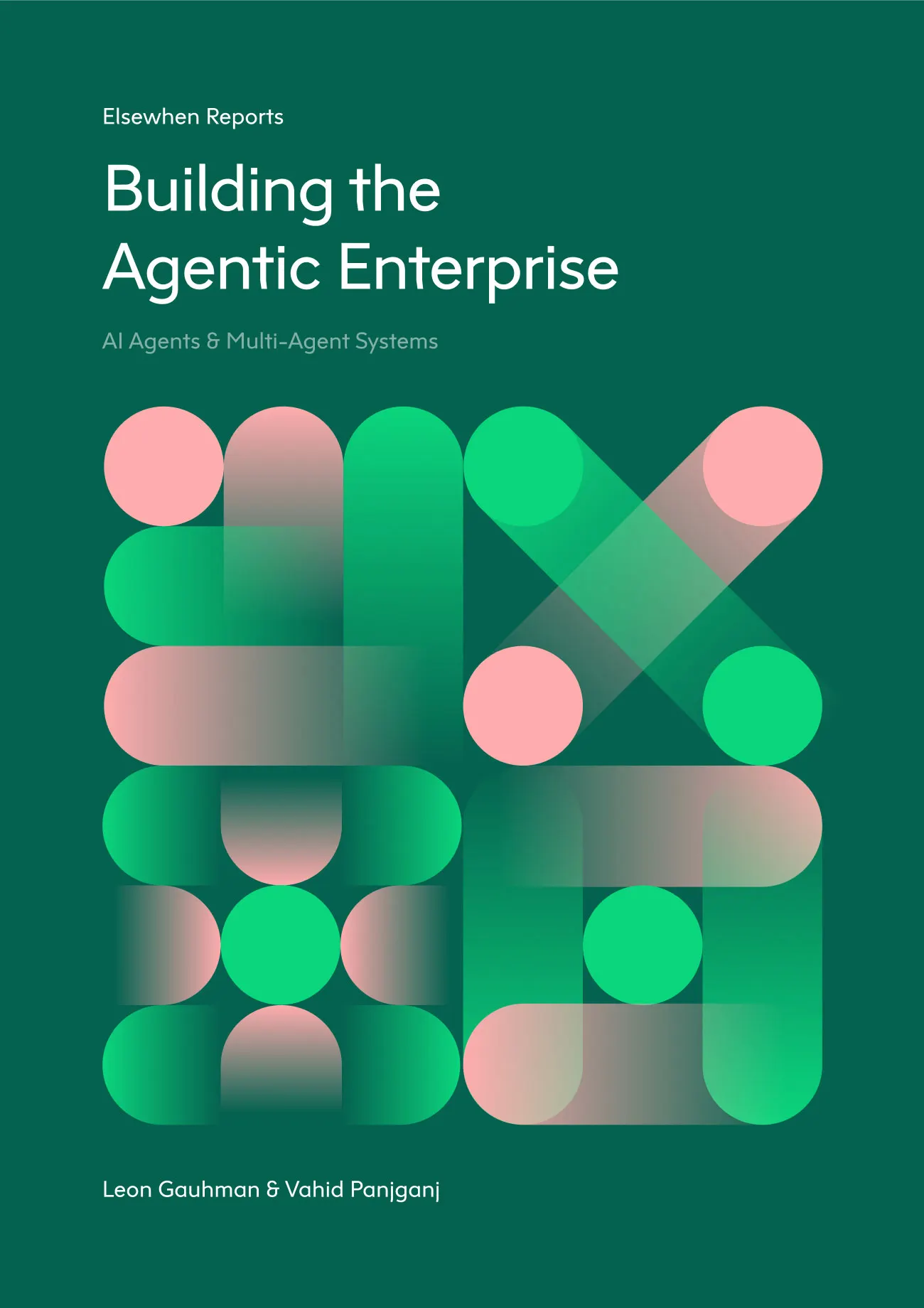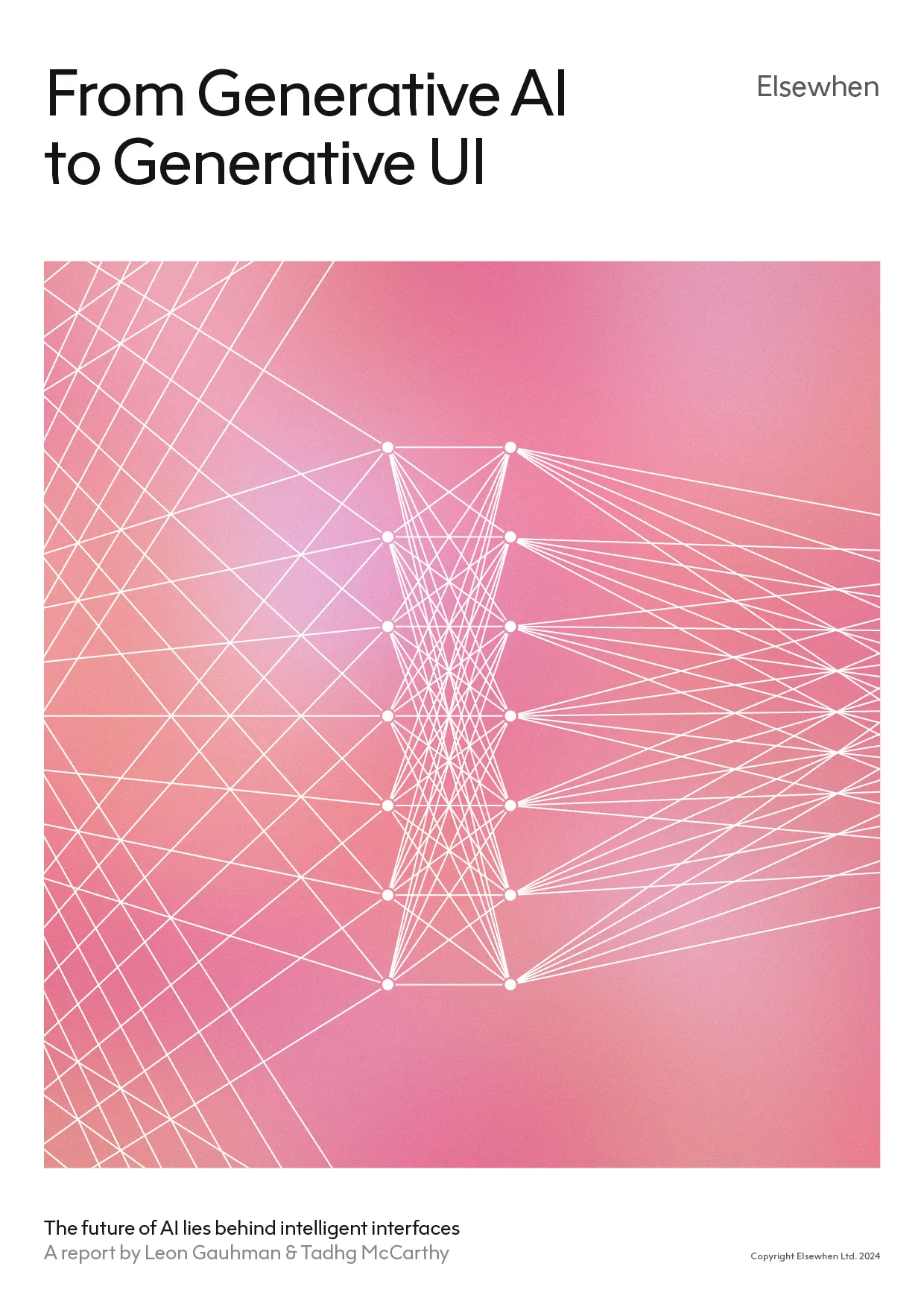
Two years since the release of OpenAI’s ChatGPT, it is clear that Generative AI (GenAI) and Large Language Models (LLMs) are transformative technologies.
In the private sector, adoption has been rapid: 80% of Fortune 500 companies integrated tools like ChatGPT within nine months of its launch, and corporate investment in AI has surged to nearly $1 trillion since 2020. Businesses are leveraging AI to drive efficiency, innovation, and productivity gains at unprecedented speed.
Yet, the public sector tells a very different story. According to some estimates, these technologies could automate up to a third of civil service tasks, transforming how governments operate. The economic stakes are high; wide-scale adoption of Generative AI could deliver tens of billions in annual savings and productivity gains worth £200 billion. Despite this potential, fewer than 45% of government departments are piloting or planning meaningful GenAI use cases.
The scale of this gap becomes clearer when we consider deployment metrics. According to one National Audit Office (NAO) survey, currently there are only 74 AI use cases across the more than 7,000 digital services listed on GOV.UK, highlighting the vast untapped opportunity for AI in the public sector. GenAI use cases, significantly, remain a small fraction of this figure.
Procurement data paints a similar picture of early-stage GenAI maturity. Since 2018, the UK government has allocated just £2.4 billion in AI-related contract value — increasing dramatically over the last 18 months. While the past year has seen a sharp increase in AI procurement activities, procurement of GenAI and LLM related contracts represents less than 1% of all AI spending.
Significantly, it is not a lack of ambition amongst government bodies that explains the low adoption of GenAI – 21% of government bodies have developed GenAI strategies and 61% plan to in the near future. Instead, it is clear that there are a number of barriers and challenges preventing public sector organisations from implementing AI effectively.
The new AI Opportunities Action Plan marks a step-change in AI adoption, with initiatives like AI Growth Zones, a National Data Library, and the ‘Scan, Pilot, Scale’ framework. While momentum is building, execution remains the real challenge.
At Elsewhen, we’ve developed the GenAI Maturity Index (AIM) tailored specifically for the public sector, designed to assess readiness, identify barriers, and unlock opportunities. This guide provides practical steps for overcoming challenges, ensuring AI adoption isn’t just a concept but a sustainable and scalable reality.
— Nadav Mordechai
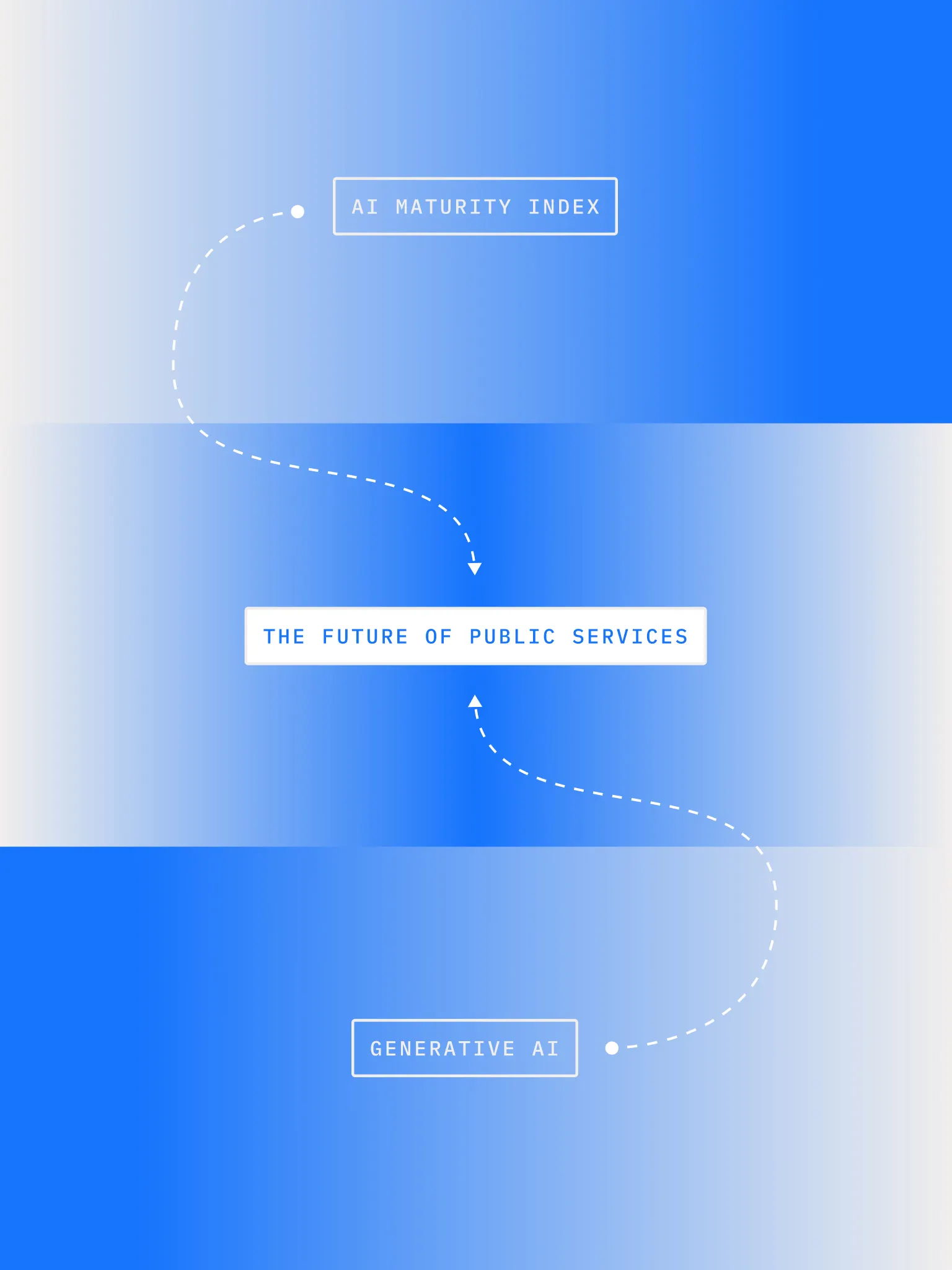
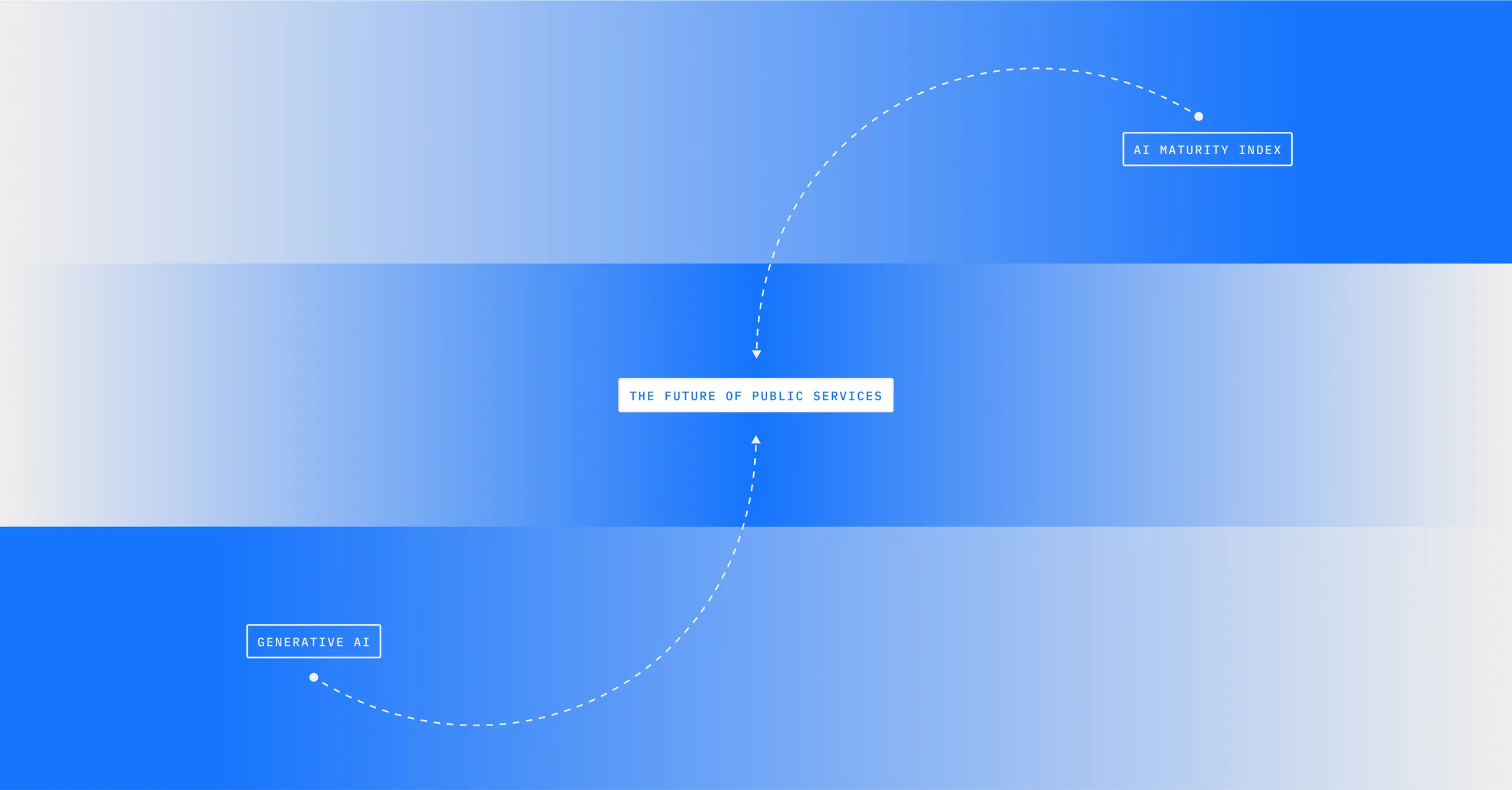
The Wider Public Sector Generative AI Landscape
While most public sector AI use cases remain rooted in traditional machine learning, Generative AI (GenAI) and Large Language Models (LLMs) are emerging as the next frontier. These technologies represent a paradigm shift, comparable to the transformative impact of the printing press, electricity, or the internet. Their ability to generate human-like responses, synthesise vast amounts of data, and facilitate natural language interactions positions GenAI and LLMs to surpass machine learning as the dominant form of AI in the public sector.
GenAI’s transformative potential is particularly evident in its ability to tackle administrative inefficiencies — a pressing challenge for the public sector. According to one analysis, leveraging GenAI could save the UK public sector £38 billion annually by 2030 by automating tasks like drafting documents, responding to inquiries, and conducting basic data analysis. These savings represent not just cost reductions but also opportunities to redirect resources toward citizen-facing initiatives and strategic priorities.
What’s more, GenAI has the potential to transform user experience (UX) across the public sector, including via conversational interfaces, co-pilots and agents. At Elsewhen, we have been exploring the ability of GenAI to generate personalised user interfaces in real-time – what we call Generative UI. This could be a game changer for the public sector, creating more user-centric, flexible and accessible digital public services at speed, scale and at a fraction of the cost.
This potential is already evident to some in the sector. The Government Digital Service (GDS) developed an LLM-powered chatbot for the GOV.UK website, showcasing how this technology can simplify citizen interactions. Similarly, the Incubator for Artificial Intelligence (i.AI) currently has 11 products in active development across Alpha, Beta, or Scaling phases, many of which utilise GenAI and LLMs to support tasks like question answering through Retrieval-Augmented Generation (RAG).
While most public sector AI use cases remain rooted in traditional machine learning, Generative AI (GenAI) and Large Language Models (LLMs) are emerging as the next frontier.
Despite significant progress, the public sector still trails behind the private sector in adopting Generative AI. This gap is largely driven by the need to prioritise compliance, responsibility, and security. However, while adoption has been slower, advancements in GenAI governance have allowed the public sector to close the gap in ensuring responsible implementation.
The Civil Service CTO has published a Generative AI Framework for His Majesty’s Government (HMG), setting out key principles for the safe and effective use of GenAI, including responsible adoption, transparency, and alignment with public needs. Complementing this, the Responsible Technology Adoption Unit (RTA) introduced the Model for Responsible Innovation, a practical tool designed to help public sector teams navigate AI adoption by identifying and mitigating risks, with a focus on fairness, transparency, and robust governance.
These frameworks and models provide crucial guidance for public sector teams, exemplified by initiatives like the Department for Energy Security and Net Zero’s AI-enabled chatbot and the Better Outcomes through Linked Data (BOLD) project. Their aim is to navigate the complexities of integrating transformative technologies while ensuring they remain innovative, effective, and ethically grounded.
It is clear that GenAI has captured the attention of the public sector, but moving from proof of concept (PoC) to meaningful adoption requires more than just frameworks and enthusiasm — it demands tangible results. With public sector productivity stagnant for over 25 years, the stakes are high. If the UK fails to leverage generative AI effectively, the Treasury could reportedly face a shortfall of £12 billion in revenue for the next fiscal year.
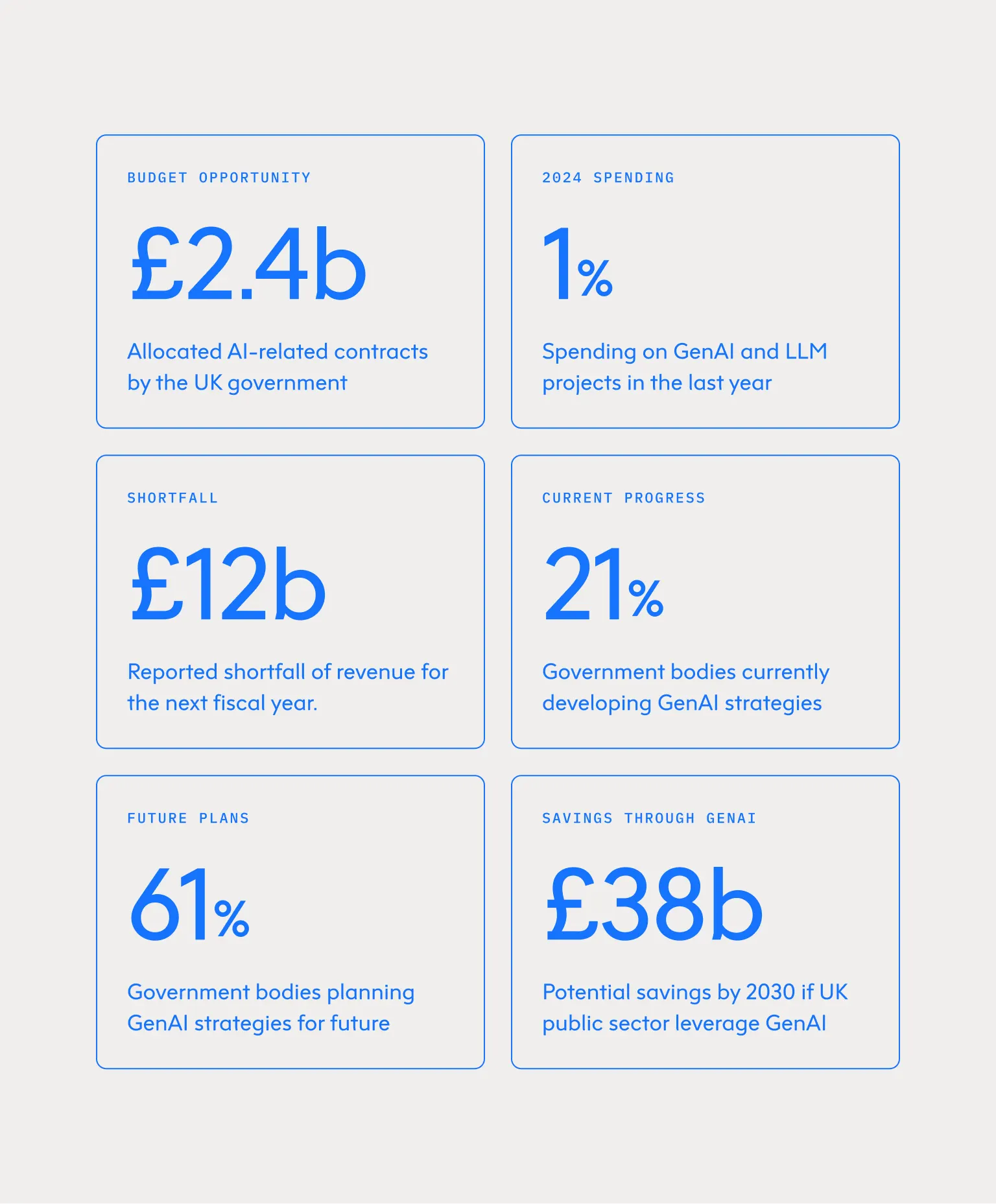
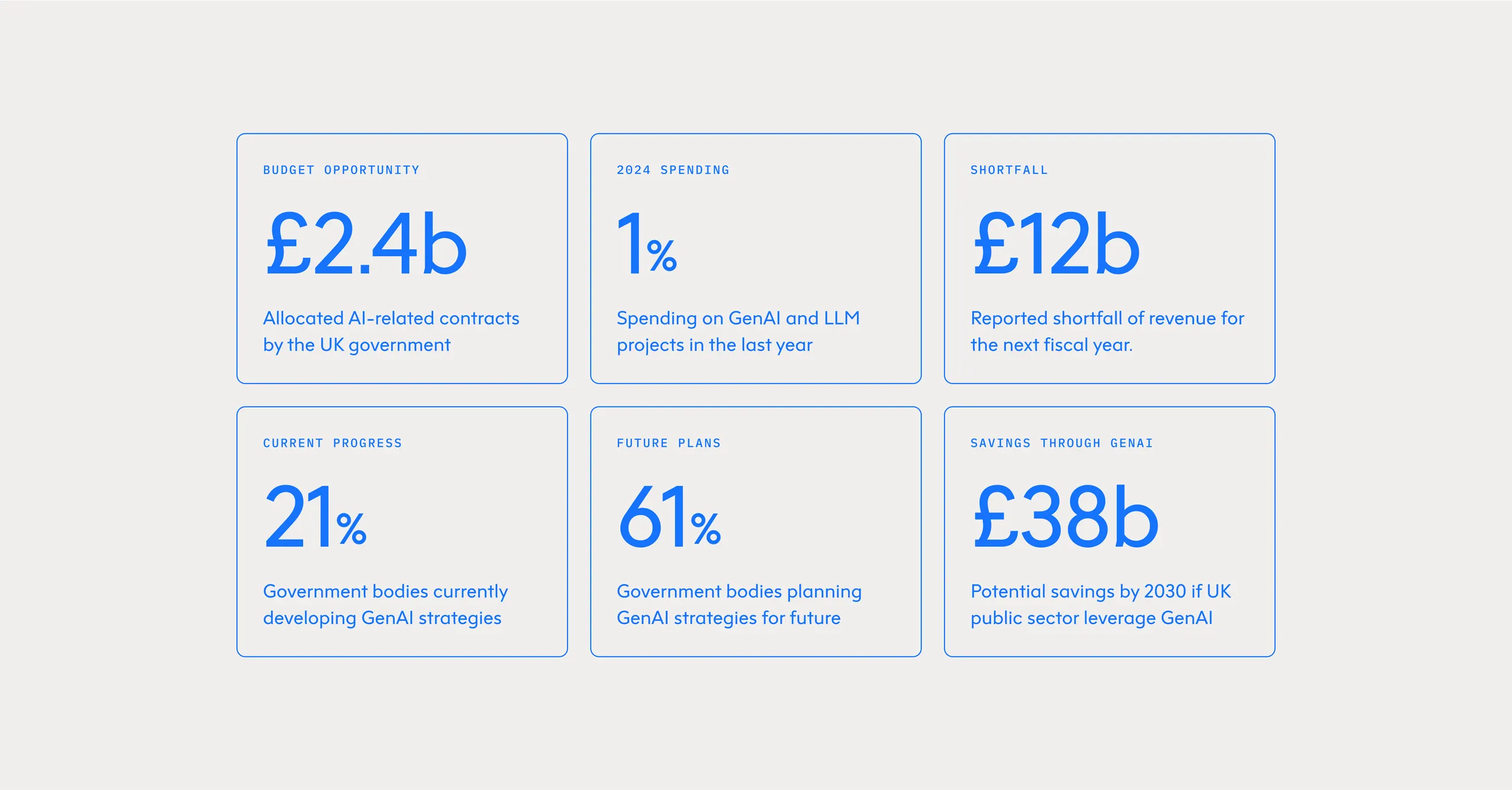
State of Procurement
Public sector AI procurement is beginning to gain momentum, with 2024 representing a dramatic increase in the value of AI projects. A significant portion of this growth was driven by contracts awarded by Transport for London (TfL) and the Met Office, yet the upward trend is evident across departments. However, the percentage of AI spending on GenAI specifically still remains minimal — less than 1%.
Despite this, there is substantial and compelling evidence to suggest this trend will begin to reverse this year and onwards. For instance, you only have to look at tenders published and awarded by the Department for Work and Pensions (DWP), the Department for Education, and Foreign, Commonwealth and Development Office reflect growing interest in AI-driven transformation.
Another notable example is the UK government’s deal with Microsoft to reduce the cost of running public services by leveraging the supplier’s cloud and GenAI technologies. This signals a shift toward larger-scale GenAI procurement, prioritising cost efficiency and operational improvements.
Despite these positive signs, procurement processes remain fragmented, with local authorities and government bodies often left to interpret guidance on fairness, transparency, and public benefit. What’s more, 70% of public procurement teams in the UK do not consider environmental factors in their decision-making processes. This lack of consistency risks undermining the full potential of GenAI in delivering transformative outcomes and broader societal objectives for public services.
As procurement activity accelerates, it will be crucial for public sector organisations to adopt frameworks that ensure AI investments align with societal needs while maintaining robust oversight. The growing momentum is encouraging, but the approach must balance innovation with accountability to achieve sustainable success.
At Elsewhen, we are well positioned to help your organisation adopt GenAI efficiently and responsibly. As a trusted supplier on the Crown Commercial Service’s G-Cloud 14 framework and the Artificial Intelligence Dynamic Purchasing System, we support a wide range of AI, data, and cloud projects. Contact us to learn how we can streamline your procurement process and deliver transformative results.


Ongoing Strategy & Policy Decisions
While the Autumn budget lacked specific announcements on GenAI, it reinforced the government’s commitment to technology as a key driver of efficiency and productivity in the public sector. This emphasis aligns with a growing number of initiatives aimed at embedding GenAI into the fabric of public service delivery.
The AI Opportunities Action Plan, now published, marks a significant shift in the government’s approach to AI adoption. It emphasises a ‘Scan, Pilot, Scale’ framework to accelerate deployment, AI Growth Zones to drive infrastructure investment, and a National Data Library to unlock public-sector data. While these initiatives signal progress, translating policy into tangible impact remains the real challenge.
Complementing this, the Review of Technology Adoption will explore barriers to implementing advanced technologies, forming a key pillar of the Labour Government’s Industrial Strategy. This review underscores the importance of ensuring the public sector can effectively adopt and integrate innovations like GenAI into its operational framework.
Artificial Intelligence is the defining opportunity of our generation… It will turbocharge every mission in this Government’s Plan for Change.
Prime Minister Keir StarmerJanuary 2025
Elsewhere, the unification of the Government Digital Service (GDS), the Central Digital and Data Office (CDDO), and the Incubator for AI (i.AI) into the newly established Department for Science, Innovation and Technology (DSIT) further reflects the government’s focus on making GenAI a central priority. This consolidation is intended to streamline digital transformation efforts, positioning DSIT as the digital nucleus of the public sector and ensuring a coordinated approach to GenAI adoption.
While these policy initiatives are promising, they are only as effective as their execution. The public sector’s ability to align these strategies with real-world applications will ultimately determine whether GenAI delivers on its transformative potential. The groundwork is being laid, but bold action and a commitment to measurable outcomes will be critical to turning ambition into impact. This is where AIM comes in.
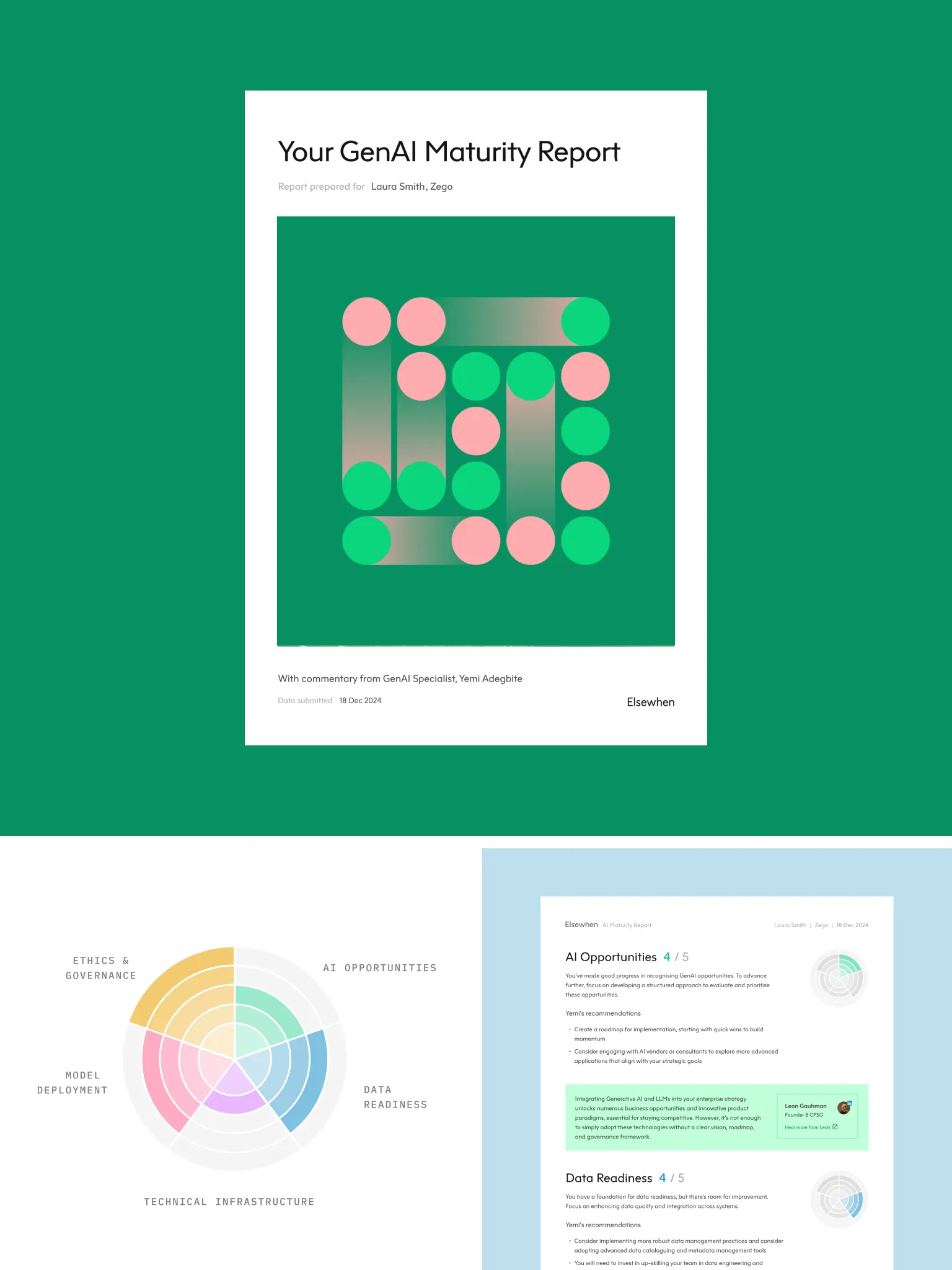
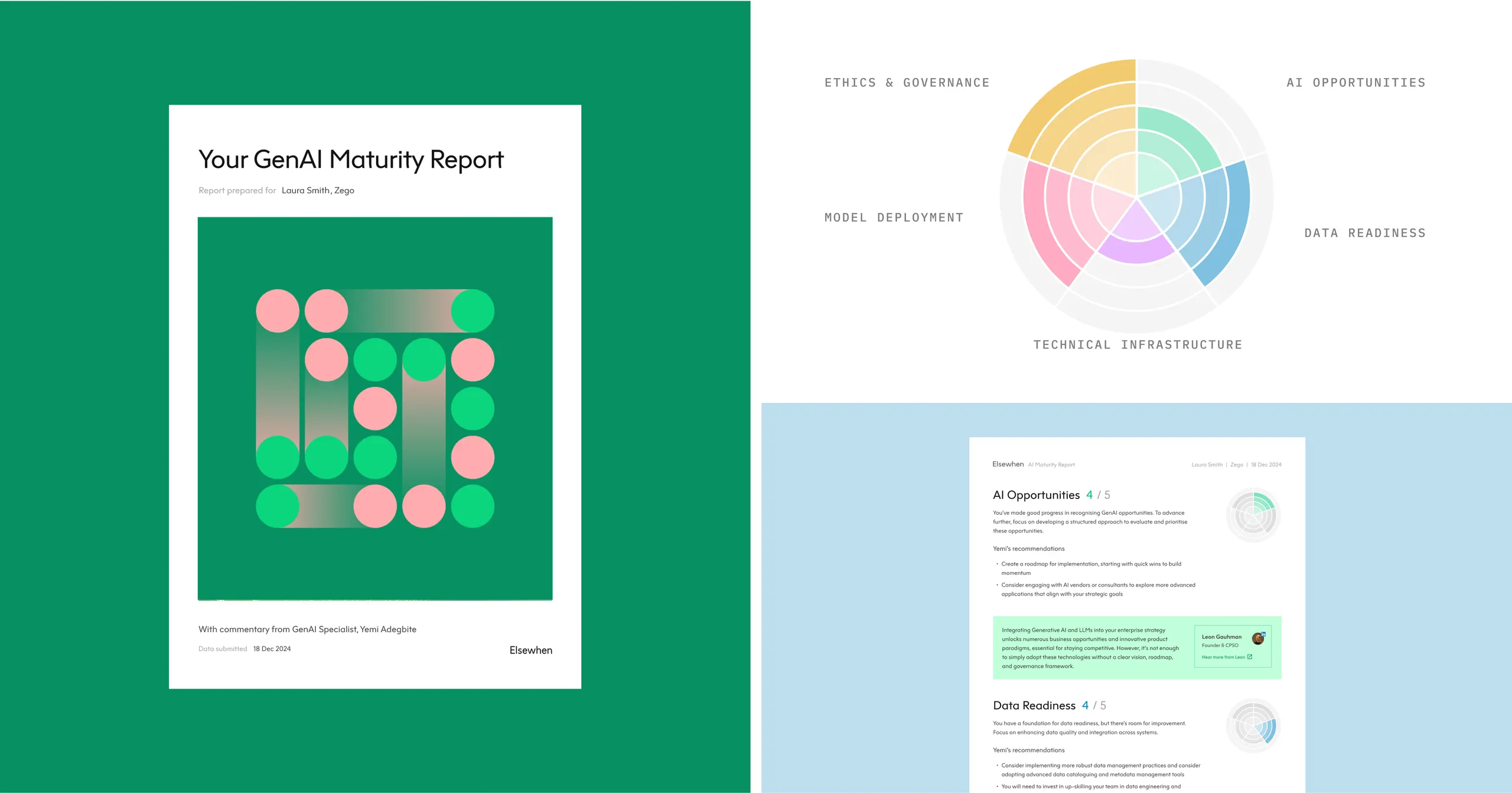
Guide to AIM
Public sector organisations are at a crossroads when it comes to AI adoption. While many recognise its transformative potential, barriers such as skills shortages, fragmented data infrastructure, and outdated systems hinder meaningful progress. To navigate these challenges, we’ve developed the Generative AI Maturity Index (AIM for short), a tailored approach to assess readiness and unlock the full potential of AI in the public sector.
AI maturity is a process of continuous evolution. Organisations evolve through stages, from exploration and early experimentation to full-scale integration and transformation. AIM provides a clear roadmap, enabling leaders to evaluate their current position and prioritise the steps needed to move forward.
At its heart, AIM focuses on five critical dimensions of AI maturity:
Opportunities: Where can AI create the most value?
Data Readiness: Is data quality, accessibility, and governance up to standard?
Technical Infrastructure: Are systems scalable and robust enough for AI?
Model Development: How well are AI models selected, refined, and deployed?
Ethics and Risk Management: Are ethical considerations embedded into AI projects?
With AIM, public sector organisations can confidently advance their AI journey.
These dimensions are not standalone; they are deeply interconnected. A gap in one area — such as insufficient data quality — can limit the impact of AI in another, such as opportunities for workflow optimisation or service delivery improvements.
Our framework bridges these gaps by offering a structured and actionable approach. It’s designed specifically for areas where the stakes are high and the need for responsible, impactful AI is critical. With AIM, public sector organisations can confidently advance their AI journey — improving services, increasing efficiency, and building trust at every stage.
In the sections that follow, we’ll explore each dimension in detail, providing insights into common challenges and practical steps for progress.
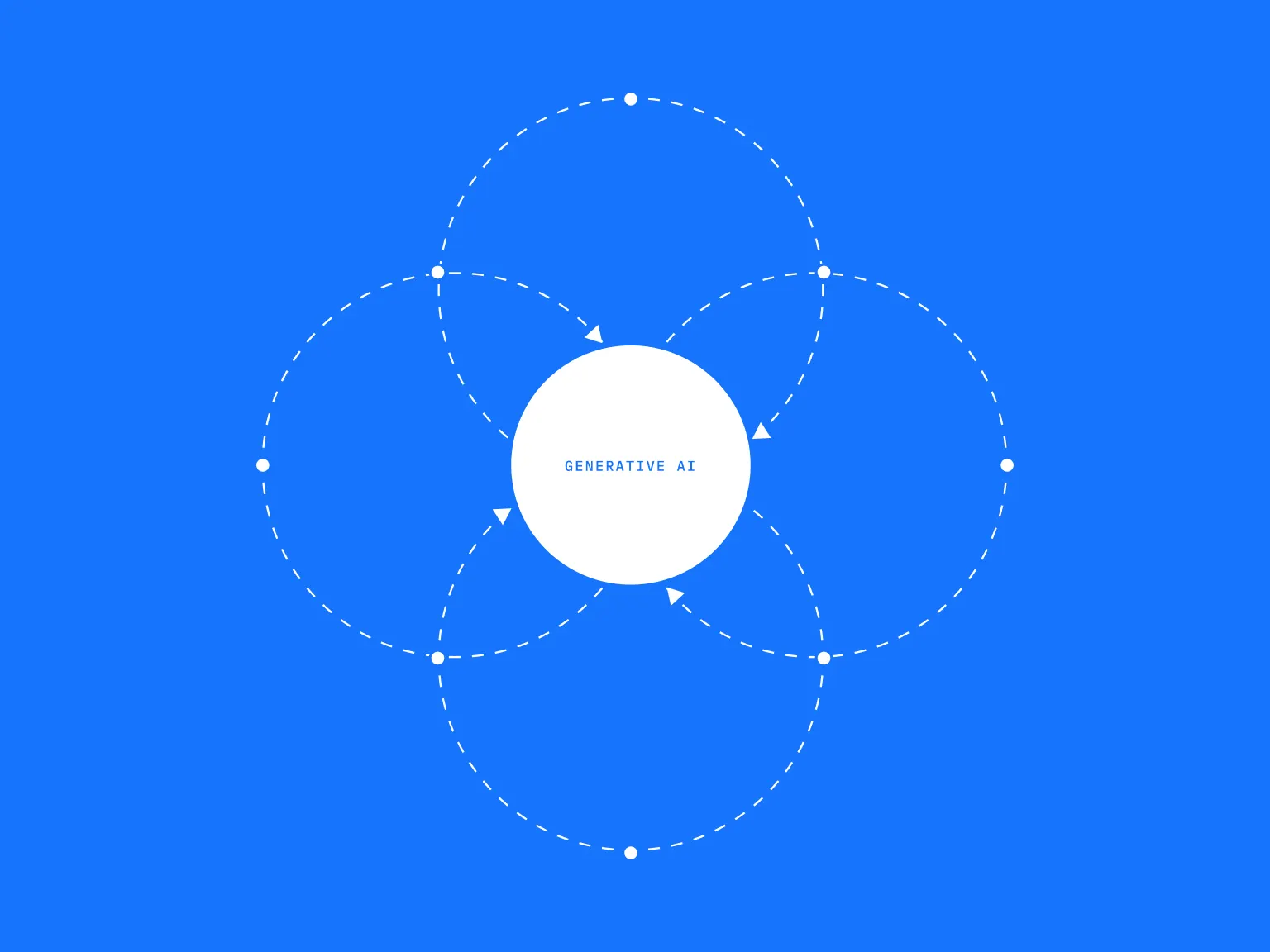
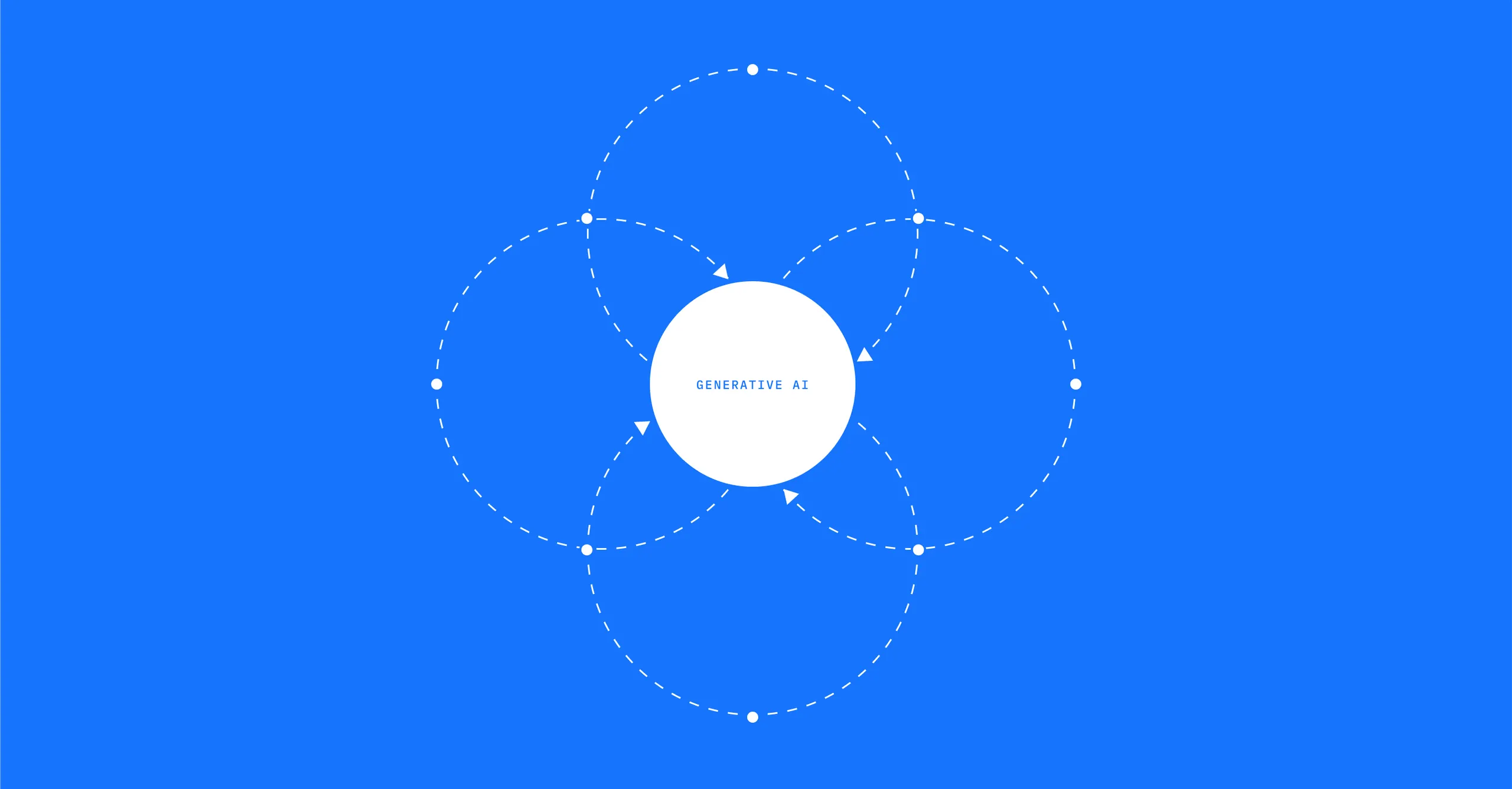
Current Opportunities
When it comes to AI opportunities in the Public Sector, a consensus is emerging around two opportunities.
Firstly, the most immediate opportunities for GenAI in the public sector lies in productivity gains for civil servants. By automating routine administrative tasks, such as data analysis, application approvals or citizen inquiries, GenAI redesigns workflows and frees up public sector employees to focus on more strategic, high-value activities. Here, GenAI-enabled productivity gains have the potential to deliver cost savings, reshape public service delivery and boost employee experience.
By focusing on areas of immediate impact, while also building the infrastructure and skills needed for long-term success, AI adoption can become a catalyst for a more efficient, citizen-centric government.
And secondly, GenAI offers the opportunity to transform public sector user experiences for both citizens and employees. New product paradigms such as conversational interfaces and co-pilots introduce new ways of interacting with data, software and customers. Meanwhile, as mentioned previously, GenUI offers a way to leverage more complex AI systems. These advancements not only benefit internal operations, they lead to more satisfied citizens and more effective public services.
Realising these benefits, however, requires a structured approach to identifying and prioritising opportunities. While the AI Opportunities Action Plan aims to accelerate this progress by setting clear goals around adopting AI, different departments, bodies and authorities will need to investigate and explore within their own organisations to identify their unique, domain-specific opportunities and needs.
AIM helps to develop a coherent AI strategy, accompanied by a prioritised roadmap for AI use cases. This ensures investments align with organisational goals and deliver measurable outcomes. This involves assessing both the technical feasibility and the potential impact of AI applications, focusing resources on areas with the greatest return on investment.
With a strategic approach to AI implementation, the public sector can unlock these opportunities and drive meaningful transformation. By focusing on areas of immediate impact, while also building the infrastructure and skills needed for long-term success, AI adoption can become a catalyst for a more efficient, citizen-centric government.


Data Readiness in the Public Sector
Data readiness remains one of the greatest barriers to AI adoption in the public sector. Despite its importance, many organisations struggle with poor-quality data, fragmented datasets, and agreements that make sharing information impractical. These challenges are not new — they have hindered digital transformation efforts for years — and now they stand in the way of achieving AI maturity. One NAO survey highlights the scale of the problem: over 60% of government bodies cited access to high-quality data as a significant obstacle to implementing AI, while half emphasised the urgent need for support in improving data access and quality.
At the heart of these challenges is the issue of consistency. Without clean, reliable, and well-documented datasets, even the most advanced AI tools cannot deliver on their promises. Privacy and security concerns further complicate the situation, especially in environments where public trust and regulatory compliance are paramount. For the public sector, the ability to securely share and integrate data across systems is no longer a nice-to-have but a necessity for unlocking AI’s potential.
By addressing the underlying issues of data readiness, public sector leaders can transform what has traditionally been a barrier into a catalyst for innovation.
The government’s 2022-2025 roadmap has recognised these challenges, proposing initiatives to improve data maturity, streamline access through a centralised hub, and establish shared data assets. These efforts aim to address systemic issues, but their success will depend on how effectively organisations can adopt and integrate these solutions into their existing processes.
AIM provides a structured approach to tackling these issues. By evaluating the readiness of an organisation’s data through lenses like quality, privacy, accessibility, and scalability, AIM identifies where gaps exist and helps prioritise solutions. For instance, improving how data is documented and shared not only increases transparency but also lays the groundwork for more efficient AI workflows. Similarly, creating robust privacy safeguards ensures that AI systems can operate responsibly and sustainably, building trust while complying with regulations.
In cases where clean data may be lacking — often a challenge for government institutions — AIM can also highlight where alternative methods, such as Retrieval-Augmented Generation (RAG), can be effectively deployed. This flexibility allows organisations to overcome data limitations while still leveraging the potential of AI.
By addressing the underlying issues of data readiness, public sector leaders can transform what has traditionally been a barrier into a catalyst for innovation. With the right frameworks and a focus on practical improvements, the foundation for impactful, AI-driven transformation can be built.


Technical Infrastructure: A Hurdle
The success of AI in the public sector depends on robust, scalable infrastructure. Large Language Models (LLMs) and advanced AI tools require significant computational resources, and as these models grow, the demand for processing power, memory, and storage increases exponentially. Without scalability, public sector organisations risk falling behind, missing opportunities to improve efficiency and reduce costs.
Yet, infrastructure readiness isn’t just about raw compute power. AI must be effectively integrated with existing systems to deliver real value. Many public sector organisations struggle to balance modernisation with legacy compatibility, slowing AI adoption. According to the NAO, 40% of government bodies cite outdated digital infrastructure as a key barrier, limiting their ability to deploy AI effectively.
Initiatives like the Incubator for Artificial Intelligence (i.AI) aim to bridge this gap by providing open-source tools and fostering collaboration where security and proprietary concerns allow. However, much of the progress remains uneven — many organisations are still laying the groundwork before they can fully embrace AI.
AIM assesses an organisation’s technical readiness for GenAI, ensuring IT systems are scalable, adaptable, and cost-efficient. Investment in modern infrastructure, cross-departmental integration, and scalable solutions will be essential to transforming AI from a challenge into a strategic advantage.
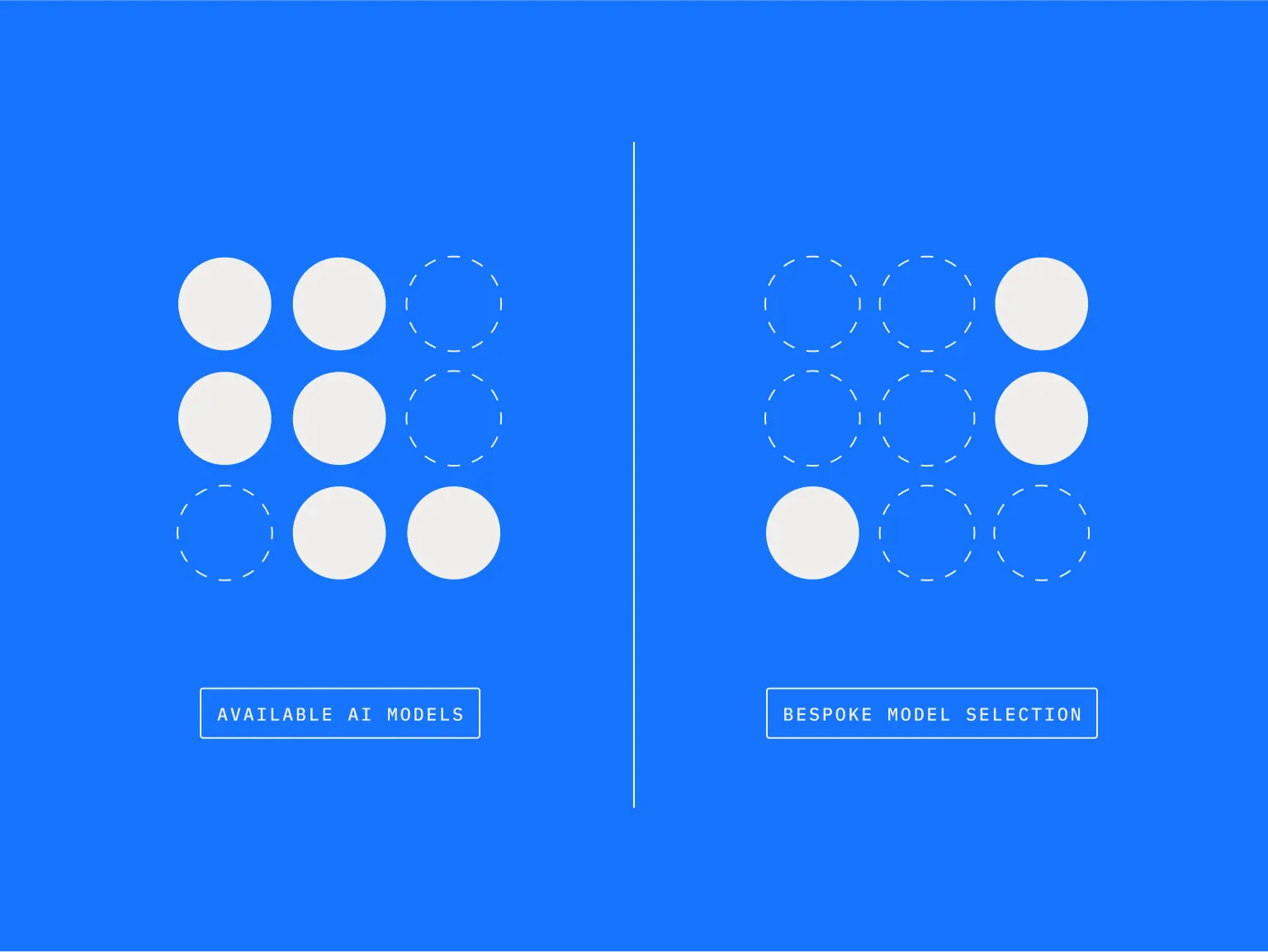

Model Selection and Development
The landscape of AI models is rapidly evolving. While significant differences once existed between proprietary and open-source models, their capabilities are now converging. This shift means that the focus is no longer solely on selecting the “best” model, but on shaping the models to fit specific tasks and objectives. For the public sector, this adaptability is critical to ensuring AI solutions align with operational needs and deliver meaningful impact.
Task-specific adaptability should be at the heart of model selection. Rather than relying on a one-size-fits-all approach, public sector organisations must evaluate how effectively a model can be tailored to meet the unique requirements of a given use case. This includes considerations such as generating citizen-facing responses, processing sensitive data, or automating administrative workflows. Generative AI models, when combined with robust processes like Retrieval-Augmented Generation (RAG), offer opportunities to integrate proprietary knowledge and provide precise, context-aware solutions.
Privacy and security remain paramount, particularly for government bodies managing sensitive data. In such cases, smaller, domain-specific language models may offer a better balance between functionality and risk. These models can often be deployed locally, ensuring compliance with stringent security requirements while maintaining high performance.
At the same time, the ability to create interoperable solutions is becoming essential. Public sector organisations operate within a complex digital landscape, integrating AI across legacy infrastructure, multiple vendors, and evolving government frameworks. The AI Opportunities Action Plan emphasises the need for modular, adaptable AI architectures, ensuring that models can be updated, replaced, or reconfigured as technology evolves. By prioritising interoperability, organisations can avoid vendor lock-in, maintain flexibility, and ensure that AI remains a long-term enabler of efficiency rather than a short-term investment constrained by rigid ecosystems.
Testing and validation remain critical components of model deployment. The rigorous evaluation of performance metrics, from accuracy to inference speed, ensures that models operate effectively in real-world environments. Additionally, public sector organisations must be prepared to iterate on these systems, refining and updating models as new requirements emerge or technologies improve.
Ultimately, model selection and development are no longer about choosing between proprietary and open-source models; it’s about aligning capabilities with outcomes. AIM offers a structured approach for assessing adaptability, security, and interoperability in GenAI models, ensuring that public sector leaders can build AI systems that are not just effective today, but resilient for the future.
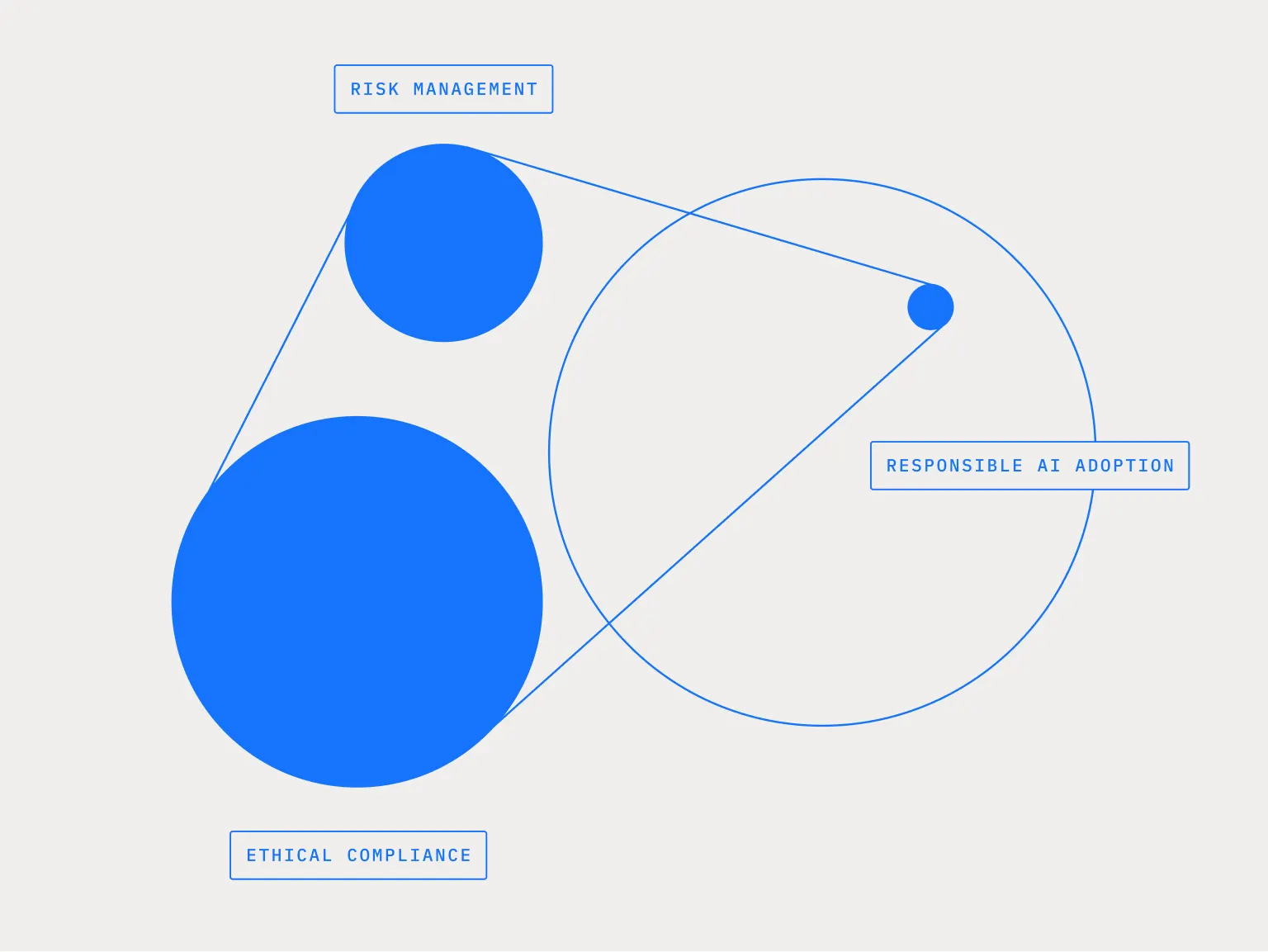

Ethical Compliance & Risk Considerations
Ethical compliance and risk management are foundational to responsible AI adoption, especially in the public sector, where trust, transparency, and accountability must align with efficiency. While the government has embedded ethical principles into its AI strategy, the challenge lies in ensuring consistent implementation without stifling innovation.
The UK has made significant strides, with initiatives like the Technology Code of Practice and Service Standard ensuring fairness, transparency, and accountability in AI adoption. The Generative AI Framework for HMG, published by the Civil Service CTO, provides specific guidance on deploying AI responsibly in public services. Meanwhile, the Algorithmic Transparency Recording Standard (ATRS) aims to increase openness around AI-driven decision-making.
Despite these efforts, implementation gaps remain. Surveys show 70% of public sector organisations need more centralised support to manage legal risks, and 63% cite concerns around privacy, data protection, and cybersecurity. Ethical AI frameworks exist, but adoption is uneven.
To close this gap, central bodies like the Responsible Technology Adoption Unit (RTA) provide practical tools such as the Model for Responsible Innovation and red-teaming workshops to proactively address risks like bias, privacy breaches, and security vulnerabilities. Additionally, DSIT’s upcoming self-assessment toolkit will help organisations align with global AI standards.
While ethical AI is a government priority, its success will depend on consistent application across all levels. The tools and frameworks are in place, but the question remains: will the public sector rise to the challenge of embedding them into every level of AI deployment?


The Path Forward
This white paper offers a macro view of the public sector’s AI readiness, outlining the broader opportunities, challenges, and strategies required for meaningful progress. However, true transformation requires more than a high-level perspective. To take a more granular view, it is essential to measure each department’s readiness on a case-by-case basis.
Every government department operates with unique constraints, priorities, and opportunities. While some may excel in areas like data accessibility, others may face hurdles in infrastructure or ethical compliance. By applying tools like the AIM at the departmental level, public sector leaders can identify specific gaps, prioritise targeted interventions, and build AI solutions that align with their unique operational needs.
The public sector is poised to achieve remarkable progress with AI. By balancing macro-level strategies with tailored, case-by-case assessments, government leaders can ensure that AI delivers its transformative potential across every level of public service.
